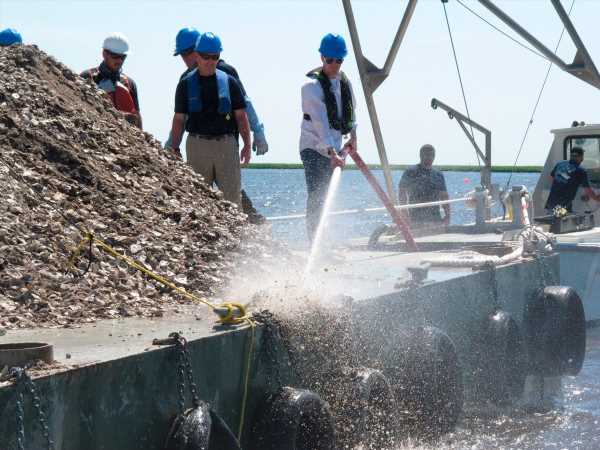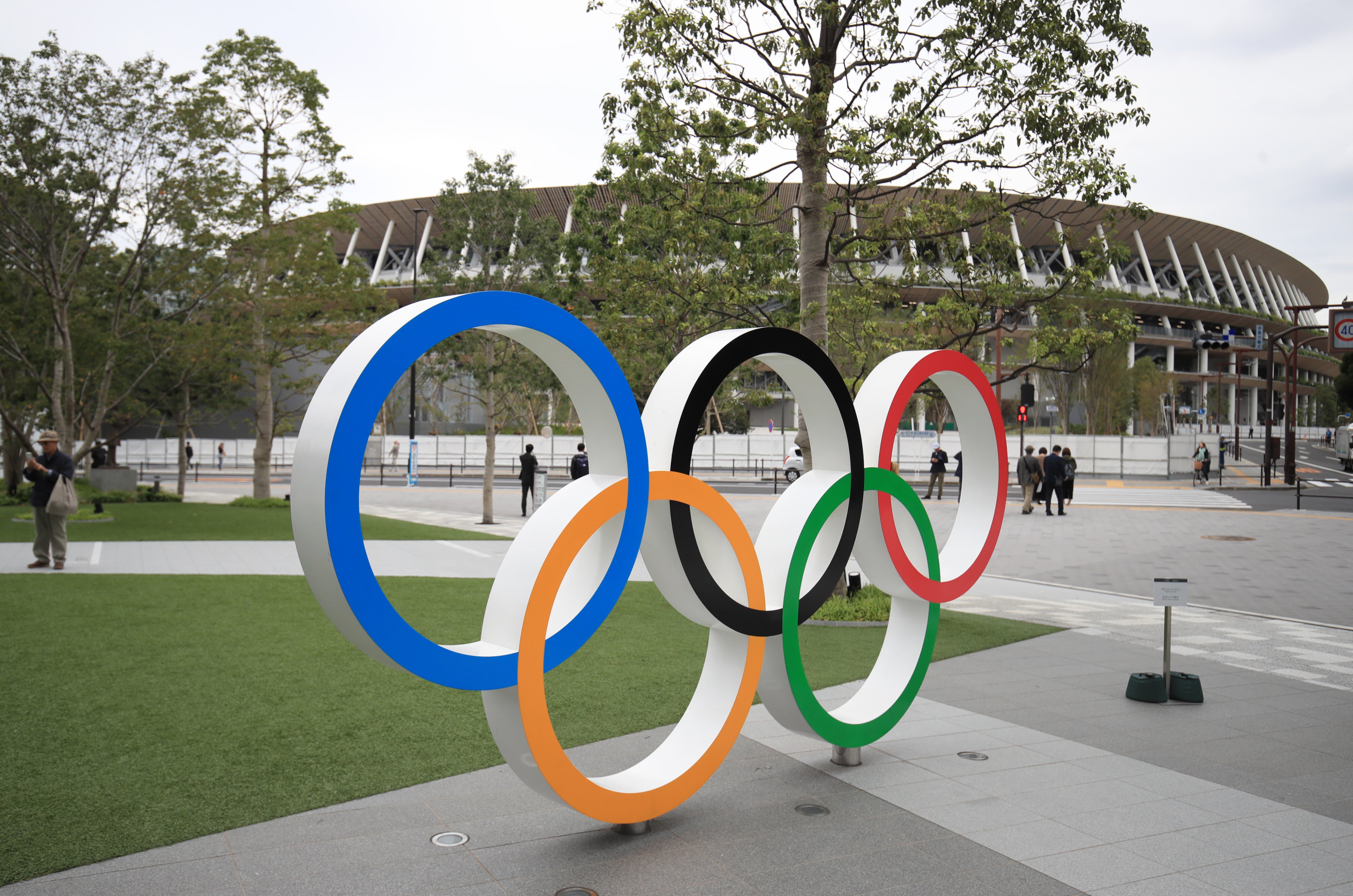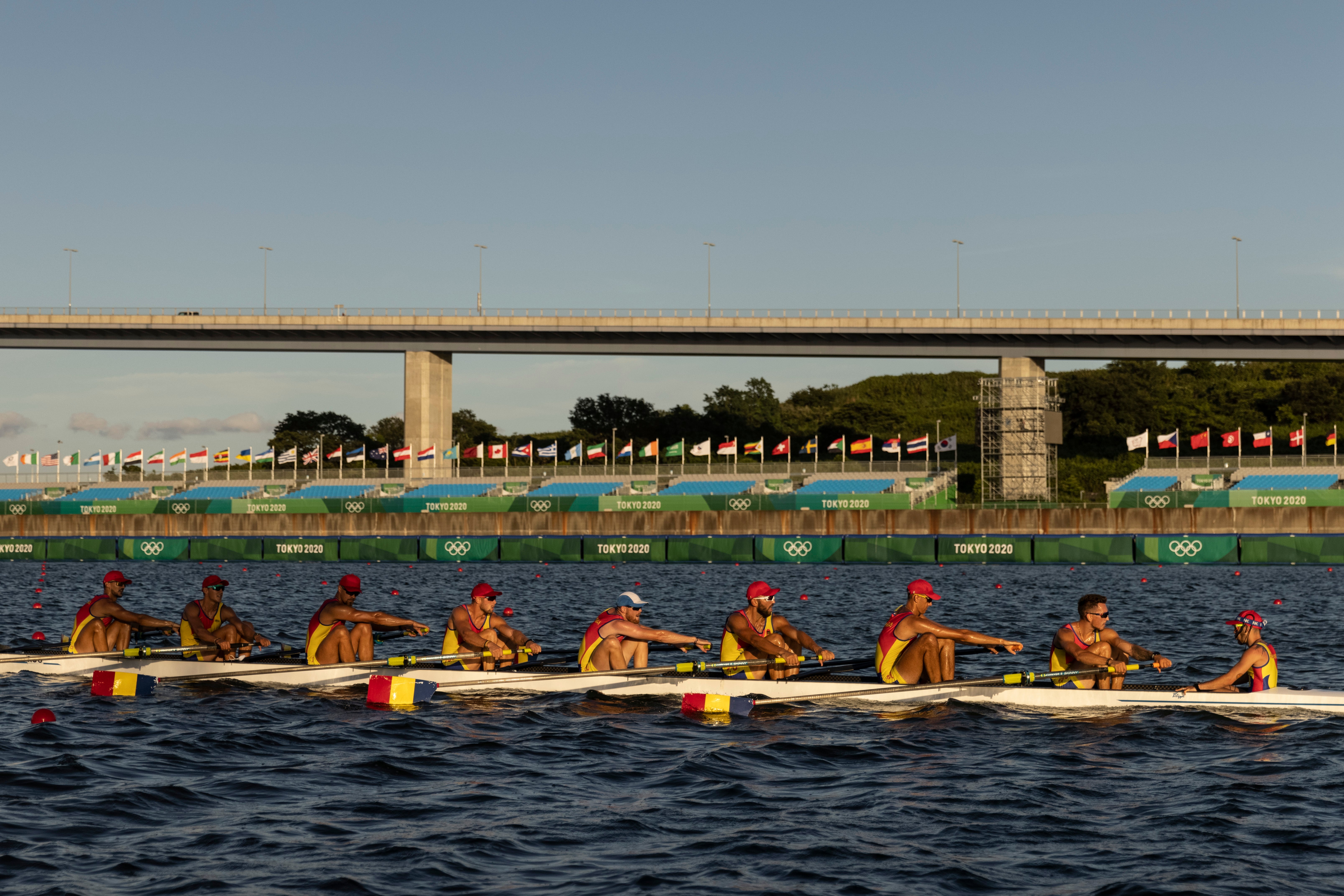File New Jersey Environental Protection Commissioner Shawn LaTourette, left, uses a high-pressure hose to blast clam and oyster shells from a barge into the Mullica River in Port Republic
Tokyo’s Olympics venue for rowing and canoeing has been threatened by an invasion of a massive population of oysters and led to staffers making last-minute anxious checks for the unwanted visitors who in the past have damaged equipment.
The officials have begun examining and sprucing up a roughly 2,000-metre course at the Sea Forest Waterway in Tokyo after an unpleasant oyster-related past experience that cost the country millions of yens.
Unexpected emergency repairs for $1.28m (£930,000) have already cost the Olympics committee in the past, as an oysters population — weighing in tonnes — attached themselves to floats which are integral to competitions.
The sea creature infestation was discovered by officials after they tried to find out why some of the floats were submerged last year.
The massive population of oysters can harvest on the surface where they are attached and can weigh down the floats that are laid out to stop waves formed by boats and canoes from bouncing back onto the athletes.
Recommended
The thriving population of a staggering 14 tonnes of edible Japanese oysters was removed by staffers from equipment spanning a 5.6 km area in a gruelling task.
The oysters were, however, not regular seafood. They were a Japanese species of shellfish known as magaki oysters, a popular delicacy in winters.
Atheletes of Romania Men’s Rowing eight (W8+) in action during a training session at Sea Forest Waterway on 18 July
Officials did not consider consuming the oysters worth tens of thousands of dollars, an person told Asahi Shimbun newspaper. “That would entail safety checks. More important is that we do not want to grow oysters but work to contain them,” the official, who was not named, added.
The area around the key gaming site was home to several finishing farms and the high salinity of the bay’s water makes it fertile ground for the oyster population to thrive.
The cost of already-delayed Olympics has ballooned to an estimate of more than $26 billion, according to Business Insider. Postponing the event due to the Covid-19 pandemic added to the costs. In a further blow to the sporting extravaganza, the Games would now be held without spectators at several venues.
Source: Read Full Article




